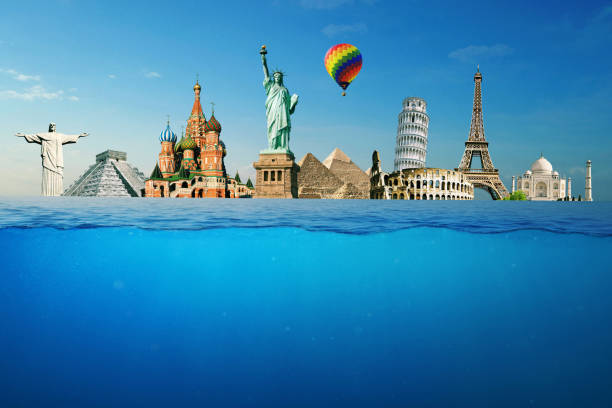Nestled in the heart of the Arabian Gulf, Qatar boasts a maritime history deeply intertwined with its Traditional Dhow boat. These classic wooden vessels are more than just relics of the past; they symbolize Qatar’s enduring connection to the sea, reflecting a rich heritage of craftsmanship, trade, and exploration. As modernity sweeps through Qatar, the traditional dhow remains a tangible link to its seafaring history, offering a unique glimpse into a time when the dhow was central to daily life and economic prosperity.
This comprehensive article explores the significance of traditional dhow boats in Qatar, delving into their history, construction, cultural importance, and their role in contemporary tourism.
The Historical Significance of Dhows
Origins and Evolution
The dhow, a term used to describe various types of traditional Arab sailing vessels, has ancient origins dating back to the early centuries of Islam and even before. The design and construction of dhows have been influenced by maritime traditions across the Arabian Peninsula, East Africa, and the Indian subcontinent. These boats were essential for trade, fishing, and pearl diving, vital activities that shaped Qatar’s historical economy.
Early Uses: Dhows were primarily used for maritime trade, transporting goods such as dates, textiles, and spices between the Arabian Peninsula and other regions. They played a crucial role in connecting Qatar with distant markets, facilitating economic exchanges and cultural interactions.
Pearl Diving: One of the most significant uses of dhows in Qatar was for pearl diving. Pearl diving was a cornerstone of Qatar’s economy before the discovery of oil, and dhows were used to transport divers to the oyster beds. The dhows’ design, with their robust construction and stable hulls, was ideal for the demanding conditions of pearl diving.
Dhows in Qatar’s Maritime Economy
Fishing: In addition to their role in trade and pearl diving, dhows were indispensable for fishing. The traditional dhow’s design allowed fishermen to navigate the Gulf’s waters with ease, catching a variety of fish that were staples in Qatari cuisine.
Trade: Dhows also played a vital role in regional trade. They facilitated the transport of goods between Qatar and neighboring regions, helping to establish the country as a significant trading hub. The dhow’s ability to carry substantial cargo made it an invaluable asset for merchants and traders.
Construction and Design of Traditional Dhows
Craftsmanship and Materials
The construction of a traditional dhow is a meticulous process that involves skilled craftsmanship and the use of high-quality materials. The dhow’s design has evolved over centuries, reflecting both practical needs and aesthetic considerations.
Materials: Traditional dhows are constructed from hardwoods such as teak, mahogany, and mahogany. These woods are chosen for their durability and resistance to the harsh marine environment. The hull is often reinforced with metal or fibrous materials to ensure stability and strength.
Construction Process: The construction of a dhow involves several steps, beginning with the selection of suitable timber. The wood is then shaped and assembled using traditional techniques, including steaming and bending to form the hull. The lateen sail, a hallmark of the dhow, is crafted from durable fabrics and mounted on a long yard, allowing the vessel to harness the wind efficiently.
Design Variations: Dhows come in various designs, each suited to specific purposes. Common types include the “baghlah” (a large, cargo-carrying dhow), the “sambuk” (a smaller, faster dhow used for fishing and trade), and the “tanja” (a type of dhow used for pearl diving). Each design reflects the dhow’s intended use and the conditions it will face at sea.
Cultural and Artistic Importance
Symbolism and Heritage
The traditional dhow is more than a functional vessel; it is a powerful symbol of Qatar’s maritime heritage and cultural identity. The dhow represents the resilience and ingenuity of the Qatari people, reflecting their deep connection to the sea and their historical dependence on maritime activities.
Cultural Symbolism: The dhow is a recurring motif in Qatari art and culture. It features prominently in traditional music, literature, and public spaces. The dhow’s image is often used to evoke a sense of national pride and historical continuity.
Artistic Representations: Contemporary Qatari artists frequently incorporate the dhow into their work, using it as a symbol to explore themes of tradition, modernity, and identity. Public art installations and murals often depict dhows, highlighting their continued significance in Qatar’s cultural landscape.
Festivals and Celebrations
Katara Dhow Festival: The Katara Dhow Festival, held annually at Katara Cultural Village, is a major cultural event celebrating Qatar’s maritime heritage. The festival features traditional dhow races, cultural performances, and exhibitions showcasing dhow construction and sailing. Visitors can experience the excitement of dhow races and learn about the vessel’s historical significance.
National Day Celebrations: Qatar’s National Day, celebrated on December 18th, includes various events that honor the country’s heritage, including dhow races along the Corniche. These races showcase the skill and precision required to maneuver traditional dhows and are accompanied by cultural performances and displays of traditional crafts.
Experiencing Dhows in Modern Qatar
Dhow Cruises and Tourism
For visitors to Qatar, experiencing a dhow cruise offers a unique opportunity to connect with the country’s maritime heritage while enjoying the beauty of its coastline. Dhow cruises come in various forms, each providing a different perspective on Qatar’s rich maritime tradition.
Day Cruises: Day cruises on traditional dhows explore Qatar’s scenic coastline and nearby islands. Passengers can engage in activities such as snorkeling, swimming, and fishing while aboard a traditional dhow. These cruises provide a chance to appreciate the natural beauty of Qatar’s waters and the practical uses of dhows in leisure and livelihood.
Sunset Cruises: Sunset dhow cruises offer a magical experience as the sun sets over Doha’s skyline. These cruises often include refreshments and provide a serene atmosphere for guests to enjoy the changing colors of the sky and the reflections on the water. The contrast between the traditional dhow and the modern cityscape creates a captivating visual experience.
Dinner Cruises: Dinner cruises on dhows provide a luxurious dining experience under the stars. Guests can savor a selection of traditional Qatari dishes and international cuisine while enjoying live entertainment. The ambiance of the dhow, combined with the picturesque setting, makes for an unforgettable evening.
Dhow Building and Restoration
For those interested in the craft of dhow building, visiting dhow workshops offers a fascinating glimpse into this traditional art form. Master craftsmen, or nakhuda, continue to build and restore dhows using techniques passed down through generations.
Dhow Workshops: Located in areas such as Al Wakrah and Al Khor, dhow workshops provide insight into the construction and restoration of traditional wooden boats. Visitors can observe the meticulous process of shaping the wood, assembling the hull, and installing the sails. Workshops often welcome visitors who are eager to learn about dhow building and the skills involved in this ancient craft.
Dhow Museums: Museums such as the Sheikh Faisal Bin Qassim Al Thani Museum feature exhibits on dhow boats, including restored vessels and artifacts related to Qatar’s maritime history. These museums offer valuable context for understanding the significance of dhows in Qatari culture and their role in the country’s development.
Conclusion
The traditional dhow boat is a cherished symbol of Qatar’s maritime heritage, embodying the country’s deep connection to the sea and its historical legacy. Despite the changes brought about by modernization and economic development, the dhow remains a vibrant part of Qatar’s cultural landscape.
For visitors to Qatar, experiencing the dhow through cruises, festivals, and museum exhibits offers a unique and immersive way to connect with the nation’s maritime history. The dhow’s continued presence in contemporary art and cultural performances reflects its enduring significance and its role in shaping Qatar’s cultural identity.
As Qatar continues to evolve, the preservation of the dhow and its associated crafts ensures that future generations will remain connected to the maritime roots that have shaped the nation. Whether sailing on a traditional dhow, exploring its construction, or admiring its depiction in art, the dhow serves as a proud reminder of Qatar’s heritage and its lasting relationship with the sea.



![[Downloader.la]-6690199cedb3d](https://gamesbad.com/wp-content/uploads/2024/08/Downloader.la-6690199cedb3d.jpg)
